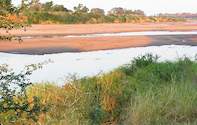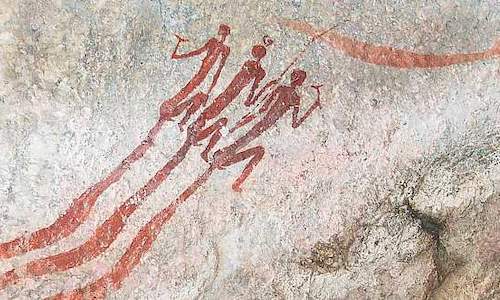
The park was first proclaimed in 1898 as the Sabie Game Reserve by the then president of the Transvaal Republic, Paul Kruger. He first proposed the need to protect the animals of the lowveld in 1884, but his revolutionary vision took another 12 years to be realised when the area between the Sabie and Crocodile Rivers was set aside for restricted hunting.
- The surface area of Kruger National Park is 7,580 miles² (19,633 km²).
- On 31 May 1926 the National Parks Act was proclaimed and with it the merging of the Sabie and Shingwedzi Game Reserves into the Kruger National Park.
- The first motorists entered the park in 1927 for a fee of one pound.
- Many accounts of the park's early days can be found in the Stevenson- Hamilton Memorial Library in Skukuza.
- There are many historical tales of the presence of Nguni people and European explorers and settlers in the Kruger area.
- Evidence of Bushman Folk (San) and Iron Age people from about 1500 years ago is also in great evidence.
- There is ample evidence that prehistoric man - Homo erectus - roamed the area between 500 000 and 100 000 years ago.
- Cultural artifacts of Stone Age man have been found for the period 100 000 to 30 000 years ago.
- There are almost 254 known cultural heritage sites in the Kruger National Park, including nearly 130 recorded rock art sites.
- More than 300 archaeological sites of Stone Age man have been found.
- There are significant archaeological ruins at Thulamela and Masorini.
- There are numerous examples of San art scattered throughout the park.
Picnic Spots - To fence or not?

In 1938 the warden expressed his concern about picnic spots and indicated that visitors at such unprotected alighting points are subject to unnecessary dangers. The board was of the view that as rest camps were far apart, such points were justified.
After consideration of the matter, it was decided that they should be maintained, but that all picnic spots had to have a black caretaker and that all shrubs and grass on the terrain had to be cleared. Stevenson-Hamilton was not satisfied, and in 1939 he repeated his warning.
The board maintained its position and as additional preventative measure, it was decided that in future, picnic spots would not be indicated on tourist maps and that warning signs be erected.
The first tourism manager The board could not immediately implement the recommendation. It nevertheless led to the appointment in 1948 of the first tourism manager HC (Van) van der Veen, as well as in 1946, initiation of amendments to the National Parks Act - enabling the board to take over all trade activities in the Kruger National Park. In 1945 the trade contract was awarded to "Kruger Park Services", until the board eventually took over all trade activities in 1955.
This information was directly translated from the original Afrikaans from the following text: Pienaar, U de V (Dr), "Neem uit die Verlede", Published by South African National Parks (then National Parks Board) in 1990. Section "Development of Tourism" of Chapter 17 (by Dr SCJ Joubert) "The history of the development of the Sabie and Shingwedzi Reserves and the Kruger National Park, 1898 to 1946." Translated and edited by Joep Stevens

 An extraordinary and colourful history of Kruger National Park including the San people, Voortrekkers and various gold prospectors....
An extraordinary and colourful history of Kruger National Park including the San people, Voortrekkers and various gold prospectors....